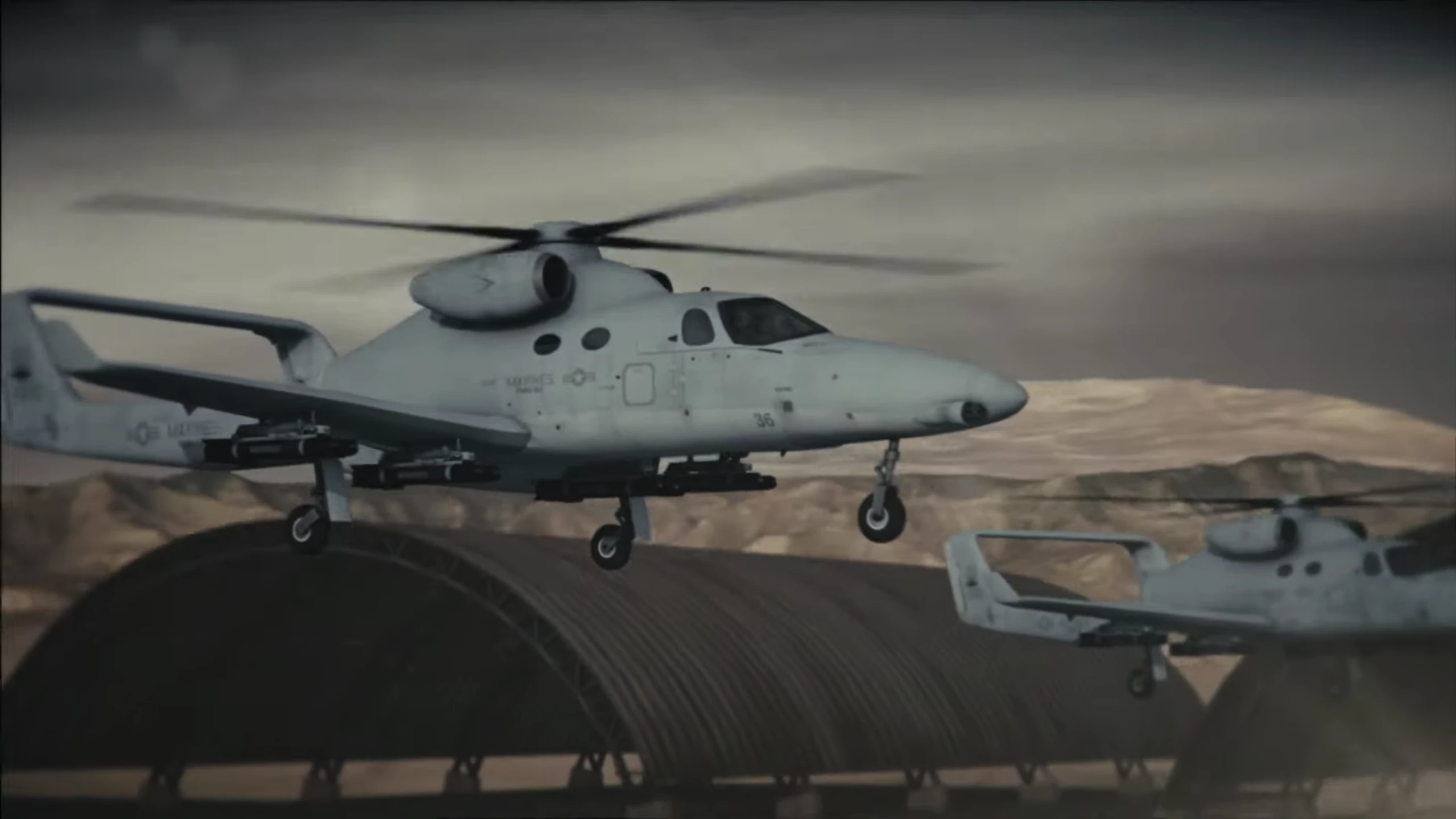Big money has decided electric VTOL air taxis are happening, but in all the excitement around drone-style multirotors, perhaps a gap has been left open for an older, less glamorous, but well-proven type of design to sneak in and scoop the market. I'm speaking of the humble gyrodyne.
They're not as sexy as something like the Lilium jet, with its banks of tiny ducted fans. But as Horizon's Brandon Robinson pointed out in our recent interview, the smaller the fan, the higher the power draw. Gyrodynes use big rotors. Really big ones that are completely unpowered during horizontal flight. And while they look dorky and old-school next to some of the alien spaceship designs we've been seeing lately, they offer some very serious advantages over planes, helicopters and multirotor eVTOLs.
A quick gyrodyne primer
A gyroplane is an airframe with a large, unpowered top rotor and a secondary rotor to provide forward thrust. Get it moving forward, and the top rotor begins spinning and developing lift, enough to fly on. A gyrodyne is very similar, but adds the ability to briefly pre-rotate and power the top rotor for vertical takeoff and hover capability.
They're not new. The gyrodyne was first conceived back in the 1930s in the UK, and the Fairey Rotodyne was flying by the 1950s, promising an inter-city VTOL skybus service faster than a helicopter and more flexible than a plane. But the Fairey design powered its top rotor with "tip jets," each applying a thousand pounds of force at the ends of the rotors. And while they only fired for a couple of minutes during takeoff and landing, they were reportedly loud enough to stop a conversation two miles away. The idea didn't take off, as it were.
Tip jets might be uncomfortably loud, but electric motors are just about silent – and thus the rise of electric aviation might well give gyrodynes their day in the sun. They offer high speeds, total VTOL capabilities, and a measure of range-extending efficiency that should give them a serious advantage over multirotor eVTOLs using smaller props.

They also offer vastly improved safety, with a proven capability to autorotate safely to a soft landing under total power failure where most eVTOLs would drop from the sky like a stone. I feel like we've written about this "death zone" issue until we're blue in the face, but when asked about total failure, every eVTOL company I've asked has simply said "we'll have multiple power systems and extra rotors for redundancy." Well, that'll cover the vast majority of issues, but in a total failure situation, not even a ballistic parachute can save you from turning into a street pizza if you're lower than 400 feet. A gyrodyne can bring you down softly from any height.
And the other huge advantage they offer is in terms of red tape. Gyrodynes can be certified under existing aviation regulations worldwide, while multirotors are so new that the codes are still being written. Certification costs should be significantly lower, and the process should be significantly faster.
So it seems there's a clear opportunity here for gyrodyne designs to jump-start the eVTOL market before the multirotor crowd gets its act together, with fast, quiet, efficient and safe aircraft that might not look as cool, but might do the job better. We said as much when we first ran into Jaunt Air Mobility and its Rosa gyrodyne, calling it "the first eVTOL we'd let our mums ride in."
Skyworks Aeronautics
Now another company is pushing to get the gyrodyne into service as an eVTOL. Skyworks Aeronautics is the latest name for what began in 1986 as Groen Brothers Aviation, then became Groen Aeronautics Corporation and Skyworks Global. The Groens' key technological contribution to the gyrodyne, it seems, was in adding a helicopter-style variable pitch rotor into the mix, allowing pilots to bring the main rotor up to takeoff speed with the rotors flat, then pitch them up with a collective-style control for vertical takeoff.
The company developed a number of gyrodyne projects, notably the Hawk 4 four-seater, which flew some 67 missions doing perimeter patrols around Salt Lake City International Airport during the 2002 Winter Olympics, the Sparrowhawk kit gyro, which was spun off as a separate business in American Autogyro, and a "Heliplane" project developed for DARPA but never prototyped. Here's the Hawk 4 demonstrating its VTOL capabilities:
By 2012, though, the company still hadn't managed to FAA-certify the Hawk 4. The DARPA project was canned, and the sale of some 100-odd kit gyros was not enough to keep the doors open. The company released a Section 14(c) information statement to its shareholders saying it was a frankly impressive US$170 million in debt, and it was acquired later that year by tech investor Steve Stevanovich.
In 2016, the SEC revoked the registration of Groen Brothers Aviation, inc, for being "delinquent in its periodic filings with the Commission" under the Securities Exchange Act of 1934, an act designed "for the protection of investors from negligent, careless and deliberate misrepresentations in the sale of stock and securities."
Now, Skyworks is preparing to go public again, either through an IPO or through a SPAC merger, announcing that Luxembourg's GEM Global Yield LLC SCS "will provide Skyworks Aeronautics with a Share Subscription Facility of up to $100 million for a 36-month term following a public listing of the Skyworks Aeronautics common stock."
One of the goals this time is to get an electric gyrodyne built ready to compete in the eVTOL market as an air taxi. To this end, Skyworks is working on something it calls the eGyro, a battery-electric gyrodyne carrying 2-4 passengers plus a pilot at speeds up to 150 mph (240 km/h) with a rather unsatisfying range estimate of 30-100 miles (50-160 km). The battery pack will be developed in partnership with Mobius.energy, and Skyworks claims the aircraft will be an "unparalleled practical, affordable, and scalable approach to intra and inter-city passenger and air cargo transport."
Unfortunately, the company hasn't spent much time on a render of the eGyro; this is the best we've got at this stage:

But Skyworks also wants to resurrect the Fairey Rotodyne, in the form of a bigger, faster gyrodyne called the VertiJet. Clearly based on the GBA-DARPA Heliplane design that was shelved back in 2008, the VertiJet is designed to compete directly with helicopters.
The VertiJet, like the Fairey design, will use tip jets to accelerate its large top rotor in VTOL operation, eliminating the need for anti-torque measures. Fairey was working on noise suppression techniques back in the 50s and 60s to get past the Rotodyne's chief drawback, and indeed managed to get the original 113-dB sound of its tip jets down to 96 dB, both measured from 600 ft (180 m) away, which would put it in the mix with the noisier of today's helicopters. Still, that's just on takeoff, and perhaps Skyworks has further tricks up its sleeve.
Once it's moving forward, the top rotor will rotate slowly and quietly, and lift will gradually be transferred to the aircraft's large wing. Forward propulsion comes from a pair of big ol' turbofans mounted high on the fuselage, and these will propel the VertiJet to cruise speeds as high as 400 mph (643 km/h). To put that in context, most helicopters top out around 150 mph ( 240 km/h).
The world's fastest helicopter, the remarkable coaxial dual-rotor Sikorsky X2, has managed 299 mph (481 km/h), and even the mighty tilt-rotor Bell-Boeing V22 Osprey can only manage 351 mph (565 km/h). The VertiJet, if it's as fast as Skyworks claims, will be a genuinely next-level VTOL aircraft offering an unprecedented combination of speed and operational flexibility.
As well as speed, the efficient turbofan arrangement will offer long-range service capability up to 1,000 miles (1,600 km), and the VertiJet promises a 1,000-lb (454-kg) payload capacity. And importantly, Skyworks says the extremely simple aircraft design, with no complex tilting rotors, coaxial arrangements, tail rotors, transmissions and gearboxes, will result in significant cost savings over the lifespan of the aircraft. Enjoy a render video of the Heliplane that serves as a base for the VertiJet below:
Two potentially promising projects, then. And there are others waiting in the wings, the most interesting of which would be the GyroLiner concept, capable of carrying anywhere between 19-100 passengers up to 350 miles (563 km) at a 240-mph (378-km/h) cruise speed, offering an inter-city VTOL mass transit service only the original Rotodyne could compete with.
Still, it's fair to say Skyworks and the Groen Brothers don't exactly have a stellar track record, and potential investors will want to take a close look before committing any money.
Source: Skyworks Aeronautics
Update February 9, 2021: This piece was originally published on February 8, wrongly stating that GEM had committed to invest US$100 million into Skyworks once it goes public. A friendly reader also pointed us toward some extra background information on Skyworks' history and some questions surrounding new owner Steve Stevanovic, and we have updated the article accordingly.











